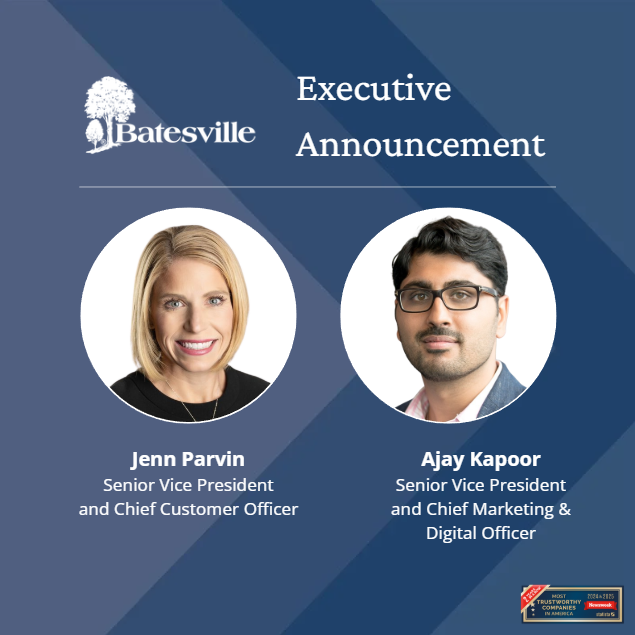Managing (And Working With) Multiple Generations
Thanks to Connecting Directors contributing writer Beth Campagno for this article!
Today’s workforce is probably the most diverse ever in terms of generations, and for a couple of reasons. Our average life expectancy has risen dramatically (77.8 years as of 2020 compared to 69.7 in 1960). Plus, people are delaying retirement and staying in their jobs longer. For the first time in history, there are five generations in the workforce. It’s a real possibility you could have coworkers or employees aged 19, 76, and all ages in between.
Who’s working?
One of the most critical things any company — and any employee, for that matter— can do is to recognize and understand the differences in these generations. While each and every member of these groups is, of course, unique when it comes to personality traits and work ethic, sociologists have made the following generalizations:
Silent or traditional generation (born 1928-1945): Many are still in the workforce into their 70’s and 80’s, and are dependable, straightforward, and loyal.
- Baby boomers (born 1946 -1964): This is the “young old” generation. They are taking advantage of second or third careers and generally staying healthier and more active. They’re optimistic and team-oriented, and 65% plan to work past retirement age.
- Generation X (born 1965-1980): Self-sufficient, individualistic, and flexible, this generation has produced the highest percentage of start-up founders.
- Generation Y (born 1981-1996): Better known as Millennials, these folks are tech-savvy, are often “job hoppers,” and want instant gratification.
- Generation Z (born 1997-2012): Gen Z-ers are mostly well-educated, entrepreneurial, and want their work to mean something. They are admittedly addicted to digital devices and appreciate progressive environments.
The youngest group of workers, Generation Z, are coming of age and will be joining the workforce soon — if they haven’t already. The next older segment, Millennials now comprise as much as 35% of today’s workforce. The U.S Department of Labor Statistics predicts that Millennials will remain the largest part of the workforce through 2030.
In contrast, the majority (37.69%) of respondents to our recent 2021 Connecting Directors Deathcare Survey are ages 40 to 55 — Generation X, falling right in the middle of the generational span.
And, coming up next are the Gen Alphas (born 2010-2025). Gen Alphas are the children of millennials and haven’t yet reached employment age. When they do, though, they’ll be the most technologically skilled generation yet to enter your workforce. Will you be ready?
Age makes a difference
When we talk about diversity in the workforce, we often focus on ethnic or cultural differences. And those are critical. But there’s often a tendency to gloss over age differences as a diversity factor, especially if other diversity factors aren’t present. However, we’re learning more and more in today’s workforce that age differences are varied and significant.
The more seasoned generations tend to have a strong work ethic, but may feel that they’re owed something because they worked long and hard to get where they are. They may excel in relationship-based environments, and are less technologically skilled than later groups.
Less seasoned generations — those who were born after the baby boomers — have had completely different life experiences, which has impacted their view of work and lifestyle. They view work as a transaction rather than a life commitment, and demand equality in pay, opportunities, and general treatment. They’re tech-friendly to highly tech-savvy, and are socially aware.
Of course, policies must generally be the same for all employees, regardless of age or other factors. But communication and expectations will be more successful with an understanding of the employee’s viewpoint.
Tips for good management of all ages
Today more than ever, age doesn’t have to be a factor in the workplace. A recent survey by Deloitte found that the generational generalizations we described earlier are beginning to blur. Respondents from all generations want some of the same things, like work/life balance, job security, and the opportunity for advancement.
Some characteristics that define workforce generations are distinct and should be included as a tool to determine the best course of action. However, the principles of good management will generally work no matter the age of the employee.
- Strive for open and honest communication, even with bad news.
- Leave stereotypes, generalizations, or opinions at the door.
- Provide communication and information that is clear and easily understood by all.
- Ensure that expectations are clearly outlined and communicated.
- Ask others how they feel, what they want, and what’s important to them.
- Build cohesion among coworkers. Experienced workers can mentor those who are less experienced, while tech-savvy workers can offer to informally teach others.




